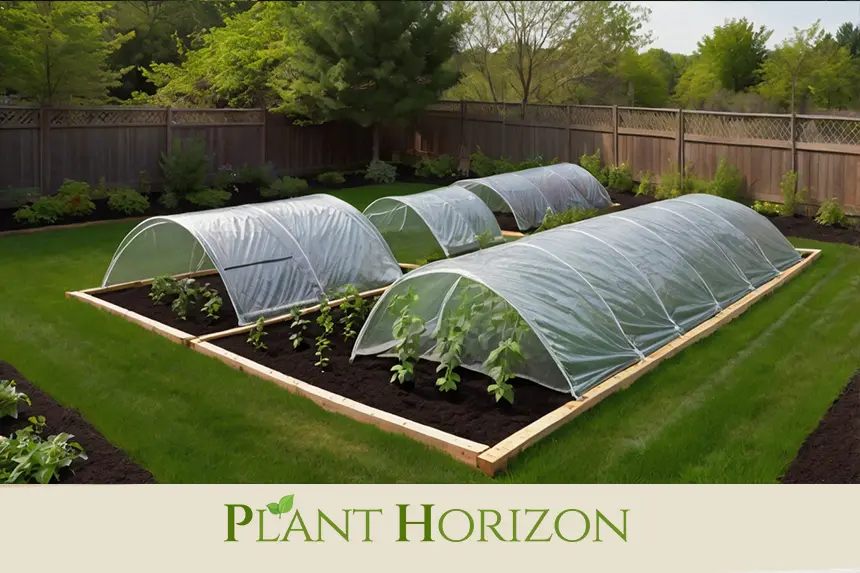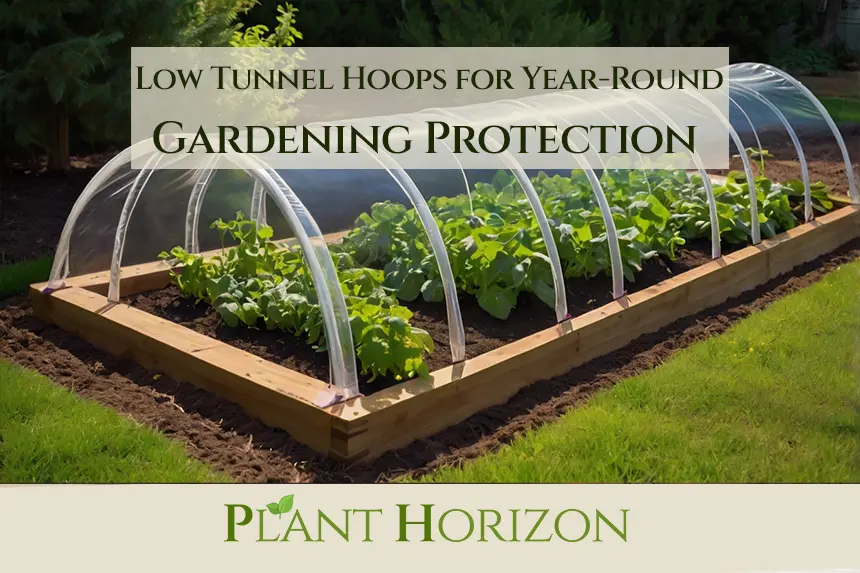Gardening is undeniably a rewarding pursuit, but it’s not without its challenges. Whether you’re battling frost, pests, or unpredictable weather, keeping your garden thriving year-round can feel like an uphill battle. That’s where low tunnel hoops come in. These versatile, simple structures provide a cost-effective way to extend your growing season and protect your crops, enabling gardeners to enjoy fresh harvests in every season.
What are Low Tunnel Hoops?
Low tunnel hoops are essentially mini-greenhouses designed to cover garden beds. Typically constructed using metal or PVC piping and covered with plastic sheeting, row covers, or fabric, they create a controlled micro-environment that benefits plants in a number of ways. These protective tunnels shield crops from harsh weather conditions like frost, snow, or heavy rain, as well as guarding against garden pests.
Unlike high tunnels or greenhouses, low tunnel hoops are lightweight and easy to construct, making them ideal for beginner and experienced gardeners alike. They’re also incredibly versatile since you can set them up temporarily to reflect the changing needs of your garden. Whether you’re looking to extend your growing season into the colder months or protect tender seedlings from spring chills, low tunnel hoops are the perfect solution.
Benefits of Using Low Tunnel Hoops
Incorporating low tunnel hoops into your gardening routine offers a range of advantages. Let’s explore some of the most significant benefits:
Extended Growing Season
One of the standout advantages of low tunnel hoops is their ability to extend your growing season. By creating a warmer environment within the tunnel, plants can continue to thrive even as temperatures drop. This is especially beneficial for crops like spinach, kale, and carrots, which can tolerate light frost but still benefit from added protection.
Protection from Frost and Cold Weather
Frost can be detrimental to many plants, causing damage to their leaves and even killing off entire crops. Low tunnel hoops act as a barrier, trapping heat from the soil during the day and preventing frost from settling on your plants at night. This makes them an excellent tool for overwintering certain crops or getting an early start on spring planting.
Pest Control
Insects and larger animals can wreak havoc on your garden, but low tunnel hoops provide an effective defense. By covering your hoops with fine mesh or row covers, you can keep out pests like aphids, caterpillars, and even deer without using harmful chemical pesticides. This allows your plants to grow undisturbed while ensuring a more organic gardening process.
Weather Protection
Beyond frost, unpredictable weather can pose challenges for gardeners. Excessive rain can lead to waterlogged roots, while strong winds can damage delicate plants. Low tunnel hoops create a stable environment, protecting your crops from these adverse weather conditions while still allowing air circulation and sunlight to reach the plants.
How to Build a Low Tunnel Hoop System

Creating your own low tunnel hoop system is a straightforward process that doesn’t require extensive skills or materials. Here’s a step-by-step guide:
Step 1 – Choose Your Materials
You’ll need the following materials to construct a basic low tunnel hoop:
- Hoops: Use flexible PVC pipes or metal wire for the frame. These can be bent into a semi-circular shape.
- Covering: Options include clear plastic sheeting for warmth, mesh fabric for pest control, or frost blankets for winter protection.
- Clamps or Clips: Secure the covering to the hoops using plastic or metal clips.
- Stakes: Anchor your hoops securely into the ground to prevent them from blowing over.
Step 2 – Prepare the Garden Bed
Make sure your garden bed is free of weeds and debris before setting up your low tunnel hoop. If you’re planting directly into the soil, ensure it’s well-aerated and fertilized to support healthy growth.
Step 3 – Install the Hoops
Insert the ends of each hoop into the soil or secure them with stakes on either side of the garden bed. Space your hoops evenly to create a sturdy frame for the cover material.
Step 4 – Add the Covering
Lay your chosen covering material over the hoops, making sure it’s taut without being stretched too tightly. Use clamps or clips to secure the cover to the frame. Ensure the ends are closed for maximum protection but can be easily opened for watering and ventilation.
Crops That Benefit from Low Tunnel Hoops
Low tunnel hoops can be used to grow a wide variety of crops. Here are some of the best options:
- Cool-Season Crops: Spinach, lettuce, kale, cabbage, and broccoli thrive under low tunnels during fall and early spring.
- Root Vegetables: Carrots, radishes, beets, and turnips can stay in the ground longer with the added warmth and protection of a low tunnel.
- Warm-Season Crops: Peppers, tomatoes, and cucumbers can benefit from early planting under low tunnels as they need a warm start.
For more tips on growing healthier crops and taking your garden to the next level, visit Plant Horizon.
Maintenance Tips for Low Tunnel Hoops
To get the most out of your low tunnel hoops, it’s important to maintain them properly. Here are some tips:
- Ventilation: During sunny days, open the ends of your tunnel to prevent overheating and allow for air circulation.
- Inspect the Cover: Check regularly for tears, holes, or sagging in the cover material and repair as needed.
- Remove Snow: In winter, brush off heavy snow to prevent your hoops from collapsing under the weight.
- Monitor Pests: Even with pest protection in place, keep an eye out for any signs of infestation or damage.
Final Thoughts
Low tunnel hoops are a gardener’s best friend when it comes to year-round crop protection. Simple to set up and incredibly effective, they can help you overcome challenges like frost, pests, and inconsistent weather. By incorporating low tunnel hoops into your gardening practice, you’ll enjoy healthier plants, higher yields, and the satisfaction of fresh produce no matter the season.
With a little creativity and effort, these DIY structures can transform your garden into a productive haven all year round. Happy gardening!











